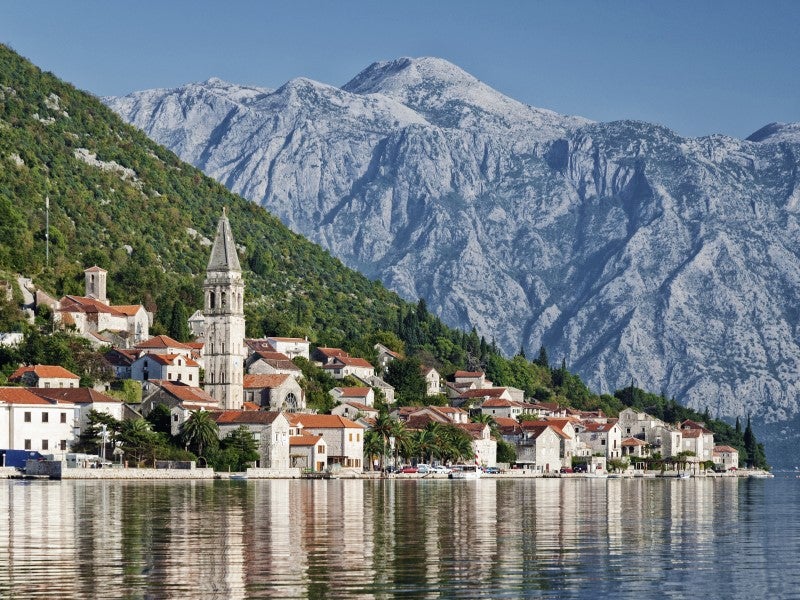
The Balkans: The uneven impact of coronavirus across society has reflected the disparity in the strength of the leasing industry across the region, with some markets suffering more than others. Paul Golden reports.
The western Balkan leasing market could be described as underdeveloped compared to western Europe, albeit experiencing steady overall growth prior to the Covid-19 outbreak, varying from 5% to 15% annually.
Although the Balkans initially looked like it had coronavirus under control there have been new outbreaks, with the WHO recently commenting on “some worrying trends in southern Europe and the Balkans” and media reports of growing public impatience across the region as infections begin to rise.
Before coronavirus, however, the leasing sector was seeing growth. For example, during the 12 months to the end of the first quarter of this year the leasing market in Slovenia and Croatia grew by 16% and North Macedonia and Serbia enjoyed annual growth of 20%.
The relatively small value of these leasing markets compared to their countries’ GDP can be attributed to lower client awareness of the advantages of lease financing compared to loans, while low-interest margins and increased administrative costs for providers who are mostly part of international banking groups meant they have been forced to increase process and cost-efficiency.
That is the view of Marko Markic, head of leasing steering southeastern Europe at Steiermärkische Bank & Sparkasse.
How well do you really know your competitors?
Access the most comprehensive Company Profiles on the market, powered by GlobalData. Save hours of research. Gain competitive edge.

Thank you!
Your download email will arrive shortly
Not ready to buy yet? Download a free sample
We are confident about the unique quality of our Company Profiles. However, we want you to make the most beneficial decision for your business, so we offer a free sample that you can download by submitting the below form
By GlobalData“In general, macroeconomic development over the past few years and diversification in terms of trends and products have helped to gradually increase demand for leasing,” he says.
“The demands of companies have been rising as the western Balkan countries pulled themselves out of the effects of the 2008 global financial crisis, which indicates growth in market stability and more affordable options for financing.”
In most of the western Balkan countries, the strongest segment of the market is passenger and light commercial vehicles, although a rise in leasing of heavy commercial vehicles such as trucks and semi-trailers is also notable. The other prominent segment is construction equipment.
Inevitably, the coronavirus pandemic has impacted all markets, especially those that are highly dependent on the tourism sector such as Croatia and Montenegro. The imposed lockdowns have had a strong influence on both leasing demand and client performance with the number of customers making use of measures to defer payment of instalments estimated to average around 30%.
Slovenia has gone even further. Having adopted a macro-prudential measure restricting profit distributions by banks and savings banks, Banka Slovenije issued a recommendation extending similar guidance to leasing companies to ensure they retain the highest possible level of capitalisation.
According to Banka Slovenije, the recommendation (which is expected to be in place for 12 months) restricting profit distributions will help maintain financial stability and prevent any disruption to the functioning of leasing companies. It relates to leasing companies that generated at least €1 million in new leasing business in 2019, where finance leasing accounted for at least 50% of the total new business, and whose total assets exceed €10 million.
The recommendation includes a temporary restriction on profit distributions to shareholders/members; the distribution of paid-up capital surplus related to capital instruments, retained earnings, accumulated other comprehensive income, other reserves and provisions; and restrictions on the use of earnings for other purposes, such as bonuses for members of the senior management.
It is very difficult to assess the health of the leasing markets in the Balkan countries because the long term consequences of coronavirus are not yet visible, says Ernest Plej, vice-president sales Croatia, Romania, Slovenia, Austria and Hungary at Grenke.
“It is difficult for lease firms in the region to support their customers and dealers and limit risk by maintaining cash flow and safeguarding liquidity,” he adds. “Segments of the market that are weak or strong depend on the lockdown strategy particular countries have followed to limit the spread of the virus.”
Plej refers to government investment in infrastructure to make certain geographical locations more accessible and attractive for investors and promote centralisation as a key factor driving demand for leasing across the Balkans.
“I do not expect growth in the leasing market over the next 12 months,” he says. “However, we expect the region to return to growth as governments create more investment-friendly environments for foreign and domestic investors.”
Data from the Croatian Financial Services Supervisory Agency (HANFA) shows that the end of 2019 there were 14 leasing companies operating in the Republic of Croatia – two fewer than at the end of the previous year – with total assets of HRK 21.6bn (£2.6bn), an increase of 10.7% on the previous 12 month period. By the end of the first quarter, total assets stood at HRK 21bn.
The most important asset item was finance lease receivables, totalling HRK 9.4bn and growing by 19.8% in comparison with the previous year as the increase in economic activity had a positive impact on the leasing of vehicles, in particular those related to passenger transport. Values of newly concluded contracts grew by 15.6% last year to HRK 102bn.
Pursuant to its powers to promote, initiate and monitor measures aimed at effective functioning of financial markets, in March 2020 HANFA sent a letter containing recommendations and instructions to all leasing companies for the purpose of mitigating the adverse impact of the Covid-19 epidemic on the economic activity, business stability and protection of service users, primarily lessees.
The market is expected to undergo further consolidation as some leasing companies have not been concluding new contracts but only maintaining existing ones, says HANFA spokesperson Nataša Vuletić.
“In addition to the existing challenges, such as the comparatively small market, considerable competition among the companies and efforts to ensure most favourable sources of financing (in respect of which leasing companies related to credit and financial institutions are in a more favourable position), the Croatian leasing market has faced new problems this year,” she adds.
“Leasing companies have borne their share of the burden in this crisis by granting a moratorium on the lease contract repayment to clients most affected by the crisis.”
Personal car leasing continues to account for the largest part of the leasing market in Croatia, in particular short term leasing, which reaches its peak during the tourist season amid increasing demand for rental cars. The advantage of a leasing market oriented mainly to personal cars lies in the fact that these leased assets are – to a certain extent – easier to liquidate, although on the other hand they relate to lower value contracts.
“Demand for lease products is also affected by investment growth in general and in particular by the recovery in the real estate market and the related construction industry,” explains Vuletić.
“Considering the long term recovery in the Croatian market, the number and value of lease contracts and leasing companies’ assets are expected to grow further.”
At the end of last year, 17 financial leasing companies had licenses to perform financial leasing operations issued by National Bank of Serbia, of which seven were in 100% or majority ownership of foreign legal entities and 13 were owned by banks, banking group members or other financial institutions.
As of 31 December 2019, balance sheet assets of all financial leasing companies totalled RSD 102.9bn (£789m), up by 18.7% relative to 31 December 2018. The largest share (91.2%) of total balance sheet assets was financial lease receivables which amounted to RSD 93.8bn, an increase of 20.6% from the previous 12 months.
Return on assets of the financial leasing sector in Serbia amounted to 1.15%, while return on equity equalled 11.27%. At the end of last year financial lease receivables past due more than 90 days accounted for 2% of gross financial lease receivables.
“Regarding financial leasing structure by lease asset, financing of vehicles is the strongest segment due to the marketability level of these assets and their attractiveness for lessees,” says Sanja Basic, spokesperson for the National Bank of Serbia.
Freight vehicles, minibuses and buses account for the largest share of the market (39.9%), followed by passenger vehicles (36.5%). Financing of immovable property accounts for less than 3% of the overall volume.
“The most important factors that are driving demand for financial leasing are that the process of approving financing is faster and simpler than a loan approval process and that the lease object is collateral itself so additional collateral is not required,” says Basic. “The expectations are that the financial leasing sector in Serbia will continue its growth trend in the next 12 months.”
The head of finance at a financial leasing services provider in Serbia notes that the country’s leasing market is largely concentrated within five companies – OTP Leasing, Intesa Leasing, UniCredit, Raiffeisen and S-Leasing.
“These five companies account for just under three quarters (74.4%) of the market and the fact that they are members of major European banking groups is an illustration of the health of the leasing market in Serbia. This concentration is in line with that found within the banking sector,” he says.
The National Bank of Serbia data points to a relatively healthy lease sector. However, there is an expectation that a number of segments will be badly affected by coronavirus, particularly companies operating in the international and tourist transport, car rental and tourist industry.
“However, according our preliminary deep dive analysis a number of sectors are showing signs of recovery, especially transportation.
“The leasing market in Serbia has enjoyed significant growth in the last few years and could be viewed as one of the fastest-growing markets in Europe. New business volume was up by 22% last year compared to 2019, while the average increase recorded across Europe was just 4%. Measured by total outstanding the year on year growth is really impressive at 20.6% – almost four times the European average,” the source says.
He confirms that commercial vehicles and passenger vehicles have been the main drivers of market growth over recent years. “Looking ahead we could expect to see a fall in demand for passenger vehicles. However, infrastructure projects in transport and energy were not halted even after the state of emergency was declared,” he says.
Construction firms
“Road construction companies continued to work on their projects and even though civil engineering is expected to slow down due to the impact of the pandemic on the real estate market we do not see any signs of market disruption. The public transport sector has suffered, but since the state of emergency was lifted regular business activities have resumed,” the source says.
The coronavirus pandemic had a significant effect on the current market situation and is likely to continue to do so to some extent in 2021 since clients will be very prudent when considering additional investments in leasing eligible assets says Markic.
“Over the next 12 months there will be decreased demand for leasing, especially in those industry segments hit most by the lockdown, but also in the passenger vehicles segment,” he adds.
“Challenges will include a sharp drop in new business, lack of demand for financing due to uncertainty and fear of what the coming months will bring, a potentially higher amount of clients with worse payment behaviour, and the effect of a short term fall in revenues due to the deferral of interest payments.”
Nevertheless, Markic predicts portfolio growth in some countries in 2020, although Croatia, Montenegro and Slovenia expect limited growth, mostly due to their reliance on the tourism sector.
He also anticipates significant growth in the following years based on the macroeconomic predictions for the countries in the region.
“With regard to the number of leasing service providers, I expect fierce competition with markets being highly concentrated on a few larger players with a strong focus on efficiency and client-centricity,” he says.
Key data at a glance
IMF REVISED REAL GDP GROWTH PROJECTIONS (DUE TO COVID-19)
Croatia 2020 (-9%); 2021 (4.9%)
Montenegro 2020 (-9%); 2021 (6.5%)
North Macedonia 2020 (-4.0%); 2021 7.0%
Serbia 2020 (-3.0%); 2021 (7.5%)
Slovenia 2020 (-8.0%); 2021 (5.4%)
Source: IMF World Economic Outlook: The Great Lockdown, published April 2020
GDP per capita (pre COVID-19)
Croatia $28,103 (provisional data)
Montenegro – Not listed
North Macedonia $15,136
(estimated value)
Serbia – Not listed
Slovenia $40,640
Source: OECD, 2019 ($USD)
Romania, Slovenia & Bulgaria
According to the White Clarke Global Leasing Report 2020, which ranks countries by leasing volume, Romania was ranked 33rd, Slovenia 35th and Bulgaria 36th.
Citing figures for 2018, White Clarke Group reported that total new leasing business in Romania was $2.55bn (with growth up 2% on the previous year); Slovenia was $1.76bn (up 3.77% year on year); Bulgaria was $1.17bn (up 20.21% year on year).
These Balkan states held their own in terms of growth, with growth by Europe as a whole down 0.3% for the same period, while Europe’s top-ranked countries experienced growth of UK (5.3%), Germany (2.39%) and France (9.79%).
According to annual leasing volume as a percentage of gross domestic product, Balkan performance was high internationally, with Slovenia ranked 7th, Bulgaria 9th and Romania 32nd.
White Clarke sources its figures from Leaseurope, the European Federation of Leasing Company Associations.
Source: White Clarke Global Leasing Report 2020







